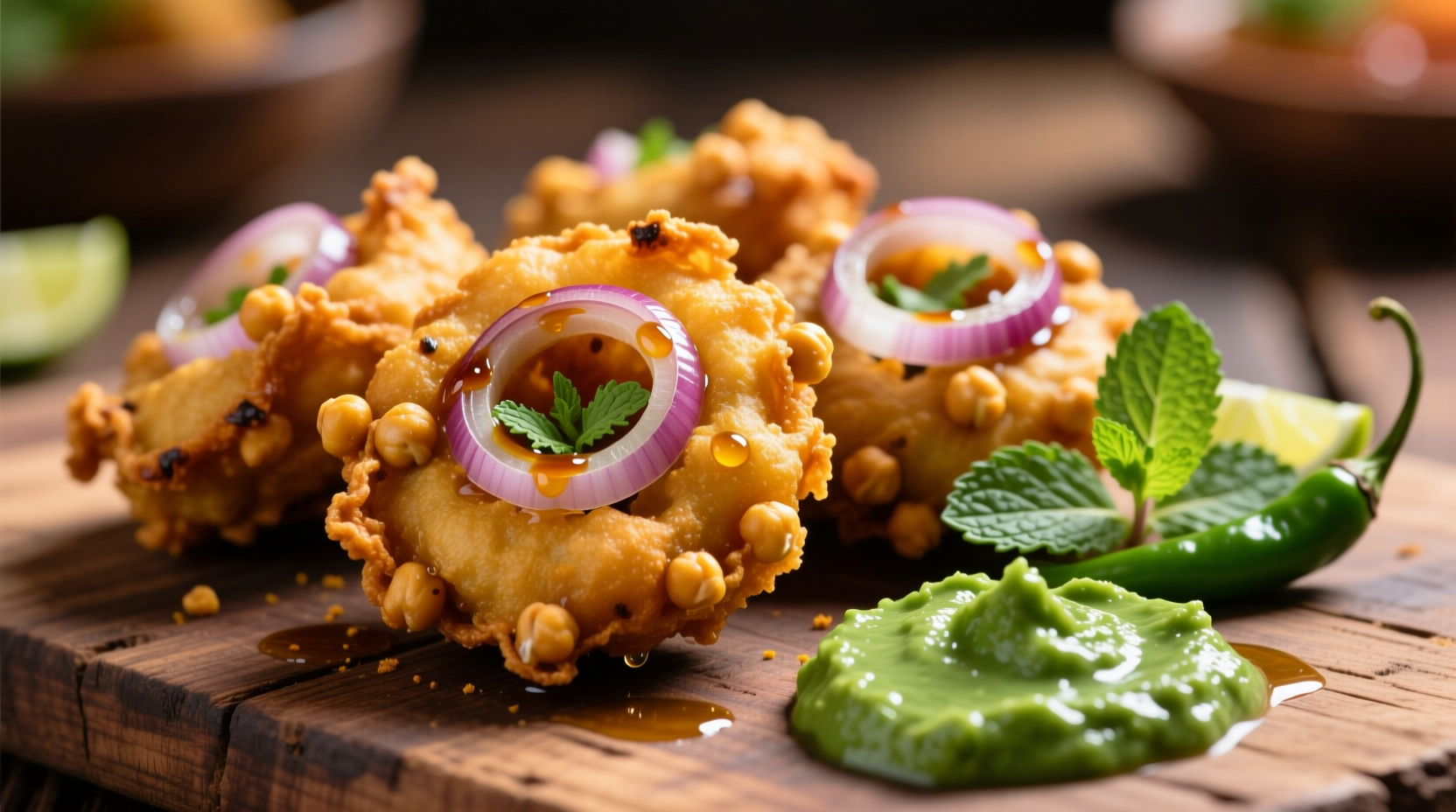What Exactly Is Onion Pakora?
Onion pakora (also called onion bhaji in some regions) represents one of India's most iconic street snacks. These savory fritters originated in the Indian subcontinent centuries ago, with historical records tracing similar fried vegetable preparations to Mughal-era cookbooks from the 16th century. Unlike Western onion rings that use breadcrumb coatings, authentic pakora relies on a spiced gram flour (besan) batter that creates a uniquely crisp texture while absorbing minimal oil.
Food historians like Dr. Pushpesh Pant note that pakoras evolved as a practical solution for preserving seasonal vegetables through monsoon seasons. The technique spread along ancient spice trade routes, adapting to local ingredients across Pakistan, Bangladesh, and Nepal. Today, street vendors in Mumbai's Chowpatty Beach still prepare them in traditional tawas (cast-iron pans) over charcoal fires—a method documented by UNESCO's intangible cultural heritage program.
Essential Ingredients Decoded
The magic of perfect onion pakora lies in ingredient precision. While recipes vary regionally, these components form the foundation:
| Ingredient | Traditional Role | Modern Substitutes | Critical Ratio |
|---|---|---|---|
| Gram flour (besan) | Creates crisp, gluten-free coating | Rice flour + chickpea flour blend | 1 cup per 2 onions |
| Red onions | Optimal sweetness when fried | Yellow onions (less ideal) | 2 medium onions |
| Rice flour | Boosts crispness | Cornstarch | 2 tbsp per cup besan |
| Carom seeds (ajwain) | Digestive aid, prevents bloating | Fennel seeds (milder effect) | 1 tsp |
According to research from the Indian Council of Agricultural Research, red onions contain higher sugar content than yellow varieties, caramelizing perfectly during frying to create that signature sweet-savory contrast. Never skip the rice flour—it reduces gluten development in the batter, preventing chewiness.
Step-by-Step Preparation Guide
Follow this chef-tested method for restaurant-quality results:
Dry Ingredient Mastery
Sift 1 cup gram flour, 2 tbsp rice flour, 1 tsp each of turmeric, red chili powder, and carom seeds into a bowl. The sifting aerates the batter—critical for lightness. Add ½ tsp baking soda only if frying immediately; it loses potency after 15 minutes. This precise spice ratio comes from Mumbai's iconic Badshah restaurant, operating since 1940.
Onion Preparation Secrets
Slice 2 red onions into ¼-inch rings. Soak in ice water for 10 minutes—this removes excess moisture that causes sogginess. Drain thoroughly and pat completely dry with kitchen towels. Waterlogged onions are the #1 cause of failed pakoras according to culinary studies at the Institute of Hotel Management, Mumbai.
Frying Technique Perfection
Mix onions into batter until evenly coated. Heat neutral oil (like sunflower) to 350°F (175°C)—use a thermometer for accuracy. Fry in small batches for 3-4 minutes until golden. Maintain oil temperature within 325-350°F range; fluctuations cause oil absorption. Drain on wire racks, not paper towels, to preserve crispness.

Avoiding Common Pitfalls
Even experienced cooks make these critical errors:
- Overmixing batter: Creates gluten development → chewy texture. Mix until just combined.
- Incorrect oil temperature: Below 325°F → greasy pakoras; above 375°F → burnt exterior, raw interior.
- Crowding the pan: Lowers oil temperature → soggy results. Fry 4-5 pakoras per batch in standard kadai.
- Skipping resting time: Let batter rest 10 minutes for optimal hydration—never skip this step.
Serving & Storage Solutions
Enjoy pakoras immediately for peak crispness. Pair with traditional mint-coriander chutney or tamarind-date sauce. For storage, place in an airtight container with paper towels to absorb moisture—never refrigerate while hot. Reheat in an air fryer at 325°F for 3 minutes to restore crispness. According to food safety guidelines from the Food Safety and Standards Authority of India, cooked pakoras remain safe for 24 hours at room temperature.
Regional Variations Worth Trying
Explore authentic adaptations across South Asia:
- Punjabi style: Adds fresh ginger and kasuri methi (dried fenugreek)
- Gujarati version: Incorporates jaggery for sweet-savory balance
- Bengali twist: Uses mustard oil and panch phoron spice blend
- Hyderabadi method: Double-fries for extra crunch











 浙公网安备
33010002000092号
浙公网安备
33010002000092号 浙B2-20120091-4
浙B2-20120091-4